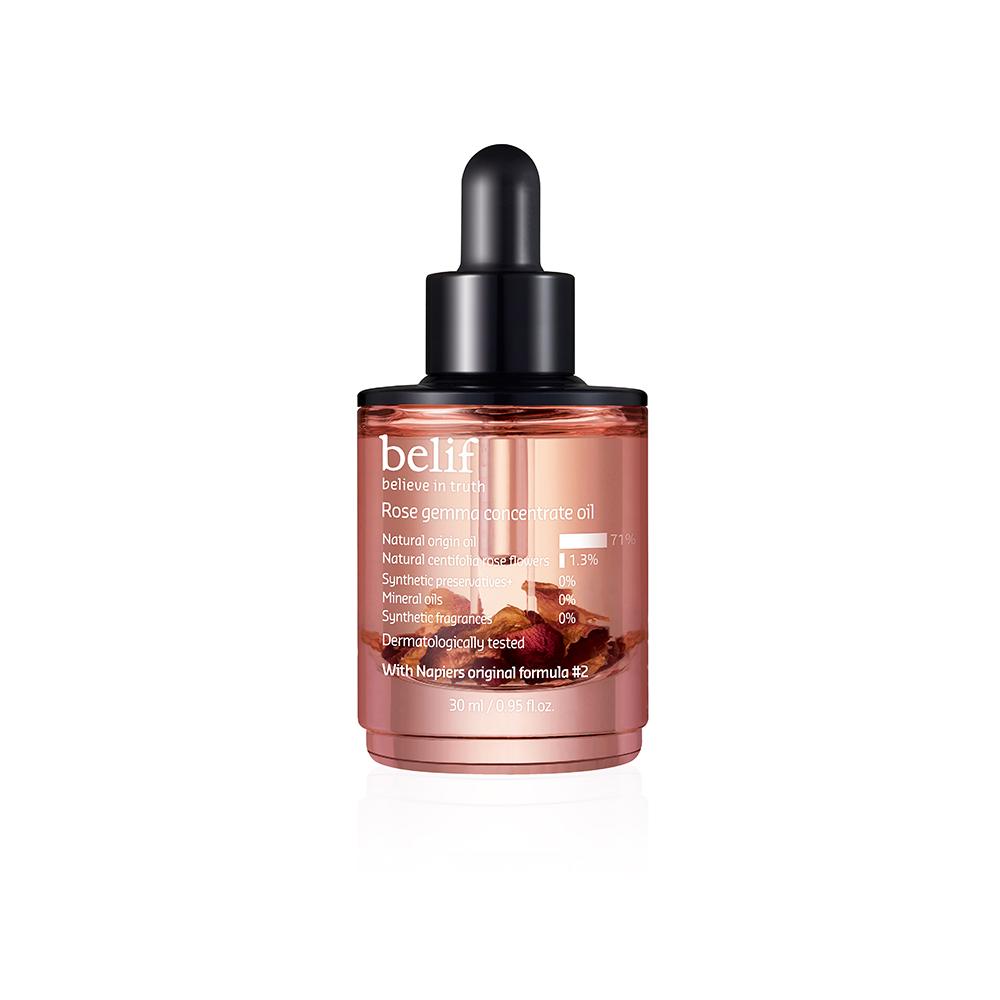
The Necessity of Facial Oil in Skincare: A Complete Guide
Share
Facial Oil in Skincare: Why It's a Must-Have for Healthy, Radiant Skin
Facial oils are an often-overlooked but incredibly powerful product in skincare routines. Despite their reputation for being heavy or greasy, facial oils can provide numerous benefits that cater to all skin types. From adding hydration to protecting the skin's natural barrier, they have become a necessity for anyone serious about skincare. In this article, we’ll dive into what facial oils are, how they’re made, how to incorporate them into your routine, and why they’re so beneficial for the skin.
What Is Facial Oil?
Facial oil is a skincare product formulated to nourish the skin by delivering moisture, vitamins, and essential fatty acids. These oils are typically derived from plant-based sources, such as nuts, seeds, and fruits. Facial oils are rich in antioxidants, anti-inflammatory properties, and nourishing ingredients that help to hydrate, protect, and rejuvenate the skin.
Unlike other moisturizing products like creams and lotions, facial oils have a higher concentration of oils and fats that can penetrate deeply into the skin, making them highly effective for both hydration and skin protection. They are often used as a final step in your skincare routine to lock in moisture and boost the overall health of the skin.
How Are Facial Oils Made?
Facial oils are made through the extraction of oils from natural plant sources. There are different methods of oil extraction, but the most common include cold-pressing and steam distillation. Cold-pressing involves squeezing the oils from seeds, nuts, or fruits without using heat, which helps to preserve the integrity and potency of the oil. Steam distillation, on the other hand, uses steam to extract the oils from flowers, leaves, or herbs, creating a more delicate formulation.
Once extracted, the oils are carefully blended with other ingredients such as essential oils, vitamins, and natural extracts to enhance their skincare properties. These blends can target specific skin concerns, like acne, dryness, or aging, making facial oils a versatile addition to any skincare routine.
Types of Facial Oils
There are a variety of facial oils on the market, each offering unique benefits depending on your skin type and concerns. Let’s take a look at some of the most popular facial oils and their uses.
Argan Oil
Argan oil is often referred to as "liquid gold" because of its ability to hydrate and nourish the skin. Rich in essential fatty acids and antioxidants, it helps to restore moisture, reduce inflammation, and promote healthy cell turnover. Argan oil is particularly beneficial for dry or sensitive skin and is also known to improve skin elasticity and reduce the appearance of fine lines.
Rosehip Oil
Rosehip oil is a popular choice for those looking to combat signs of aging and improve skin texture. It’s packed with vitamin C, a potent antioxidant that helps to brighten the skin and stimulate collagen production. Rosehip oil is also known for its ability to heal scars, reduce hyperpigmentation, and even out skin tone. It’s lightweight, making it ideal for oily or acne-prone skin, and can be used as a treatment for sun damage or dark spots.
Jojoba Oil
Jojoba oil is unique in that its molecular structure is very similar to the skin’s natural oils. This allows it to easily absorb into the skin without leaving a greasy residue. Jojoba oil is a great option for balancing the skin’s oil production, making it ideal for both oily and dry skin types. It also has anti-inflammatory properties that help calm irritated skin and reduce redness.
Marula Oil
Marula oil is a rich, hydrating oil that’s packed with antioxidants and essential fatty acids. It’s great for those with dry or dehydrated skin, as it helps to lock in moisture and improve the skin’s overall texture. Marula oil is also known for its anti-aging benefits, as it helps to reduce the appearance of fine lines and wrinkles while boosting the skin’s elasticity.
Squalane Oil
Squalane oil, which is derived from olives or sugarcane, is a lightweight and non-comedogenic oil that works well for all skin types. It’s particularly beneficial for balancing the skin’s moisture levels, making it an excellent choice for people with oily or acne-prone skin. Squalane is also known for its anti-aging properties, as it helps to protect the skin from environmental stressors and improve skin texture over time.
How to Use Facial Oils
Facial oils should be applied after your serum and before your moisturizer. Here's how to incorporate them into your skincare routine:
-
Cleanse Your Skin: Start with a clean, dry face. Use your favorite cleanser to remove any dirt, oil, or makeup from the skin.
-
Apply Toner (Optional): If you use a toner, apply it next. This helps to balance your skin’s pH and prepares it to absorb the facial oil more effectively.
-
Serum Application: Apply your serum next, as it contains active ingredients that target specific skin concerns like acne or fine lines.
-
Facial Oil: Once your serum is absorbed, take a few drops of facial oil (about 2-4 drops, depending on your skin’s needs) and gently press it into your skin using your palms. Avoid rubbing, as this can irritate the skin.
-
Moisturize: Finally, apply a moisturizer to lock in the benefits of the facial oil and ensure your skin stays hydrated throughout the day or night.
You can use facial oils once or twice a day, depending on your skin’s needs. If you have oily skin, you may prefer using them at night, while dry skin types may benefit from using them both morning and evening.
Benefits of Facial Oils
Facial oils offer a wide range of benefits that go beyond simple hydration. Here’s why you should consider adding them to your skincare routine:
Deep Hydration
One of the primary benefits of facial oils is their ability to deeply hydrate the skin. Many facial oils contain fatty acids and lipids that penetrate the skin barrier, providing intense moisture that lasts throughout the day or night. Unlike water-based moisturizers, facial oils lock in moisture without evaporating, making them especially useful for dry or dehydrated skin.
Skin Barrier Protection
Facial oils help to strengthen the skin’s natural barrier by replenishing the lipids and oils that may be stripped away by harsh cleansers or environmental stressors. This barrier protection helps to prevent moisture loss and shields the skin from pollutants, harsh weather, and UV radiation.
Anti-Aging Properties
Many facial oils, such as rosehip and marula oil, are packed with antioxidants that help fight free radical damage, which is a major contributor to premature aging. Antioxidants like vitamin C and E help protect the skin from environmental damage, reduce inflammation, and promote collagen production, leading to smoother, firmer, and more youthful-looking skin.
Improved Skin Texture
Facial oils can help to smooth out rough patches and improve overall skin texture. Oils like argan and rosehip oil are rich in vitamins and fatty acids that support healthy cell turnover, helping to reveal fresher, more radiant skin. Regular use of facial oils can also help to minimize the appearance of fine lines and wrinkles.
Calming and Soothing
Certain facial oils, such as jojoba and chamomile oil, have anti-inflammatory properties that help to calm irritated or sensitive skin. These oils can soothe redness, irritation, and inflammation, making them great for conditions like rosacea or eczema. They can also be used to calm the skin after sun exposure or a chemical peel.
Balancing Oil Production
Facial oils can help balance the skin’s oil production, making them suitable for oily skin types as well. Jojoba oil, for example, mimics the skin’s natural oils, helping to regulate sebum production and reduce the likelihood of clogged pores. When the skin’s oil production is balanced, it can help to prevent both dry patches and excess shine.
Debunking Common Myths About Facial Oils
Despite their many benefits, facial oils often come with misconceptions that can deter people from using them. Let’s take a look at some common myths and set the record straight.
Myth #1: Facial Oils Are Only for Dry Skin
Facial oils are beneficial for all skin types, not just dry skin. While they provide intense hydration for dry skin, they can also help balance oil production for those with oily or acne-prone skin. The key is to choose the right oil for your skin’s needs.
Myth #2: Facial Oils Will Make My Skin Greasy
While it’s true that some oils may leave a shiny finish, most facial oils are lightweight and absorb quickly into the skin. If you choose the right oil for your skin type, you won’t have to worry about greasy residue. In fact, many oils work to balance oil production, making them a great choice for those with oily skin.
Myth #3: Oils Will Clog My Pores
Not all oils are comedogenic (pore-clogging). In fact, many facial oils are non-comedogenic and specifically formulated to avoid clogging pores. Look for oils like squalane or jojoba, which are light and won’t contribute to acne breakouts.
Conclusion: Facial Oils Are a Skincare Essential
Facial oils are a valuable addition to any skincare routine, offering a host of benefits that can help improve your skin’s hydration, texture, and overall appearance. With so many different types of oils available, there’s one for every skin type and concern. From moisturizing to anti-aging, facial oils provide a natural and effective way to nourish and protect the skin. When used correctly, facial oils can become a necessary part of your skincare regimen, helping you achieve radiant, healthy-looking skin.
Incorporating facial oils into your routine doesn’t have to be intimidating. With the right oil and proper application, you can experience all the benefits these amazing products have to offer. Whether you’re dealing with dry, oily, or sensitive skin, there’s a facial oil that can help you achieve your skincare goals. So, give your skin the love and care it deserves, and make facial oils a staple in your beauty regimen.
Explore Skincare on AgelessBeauty.com
